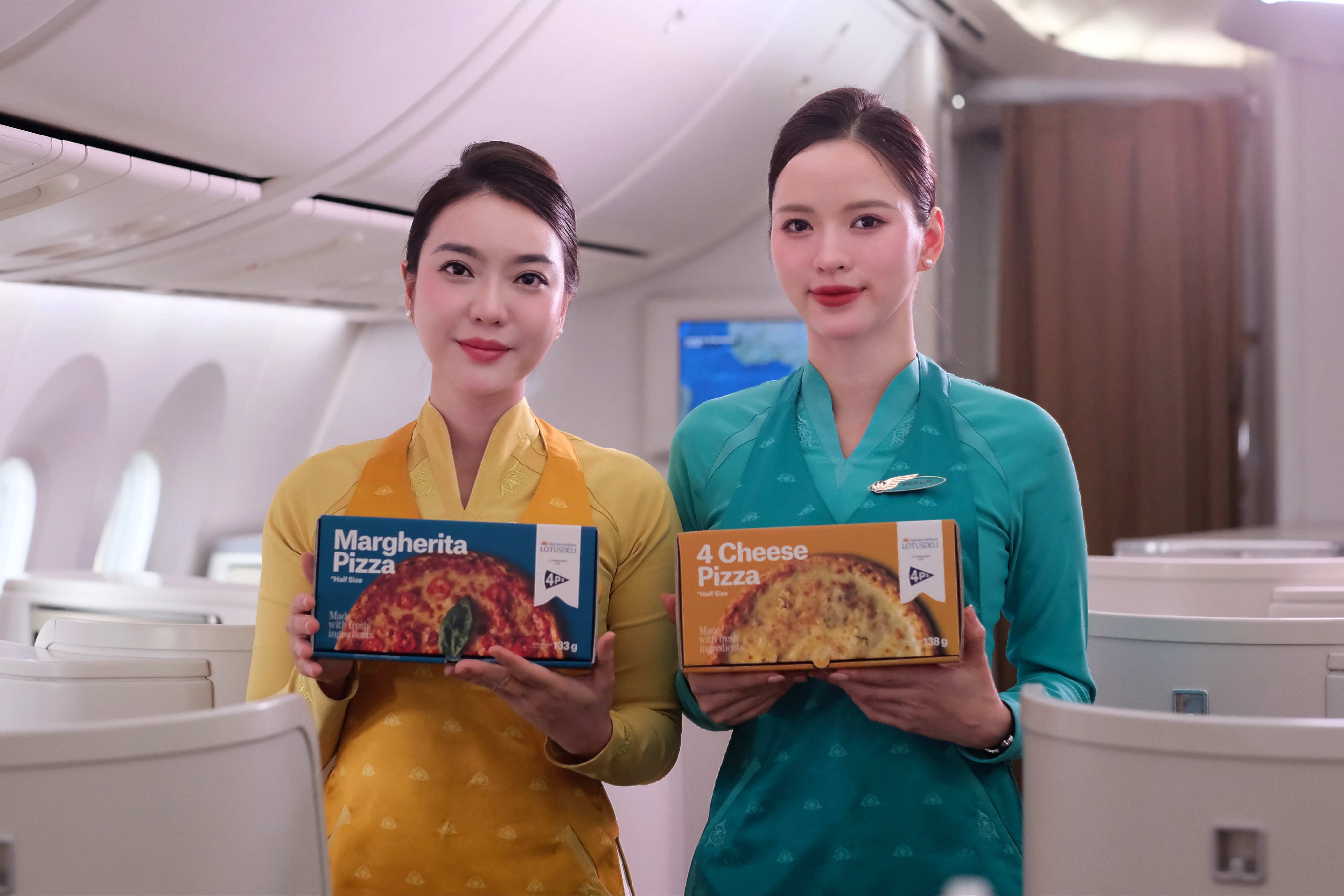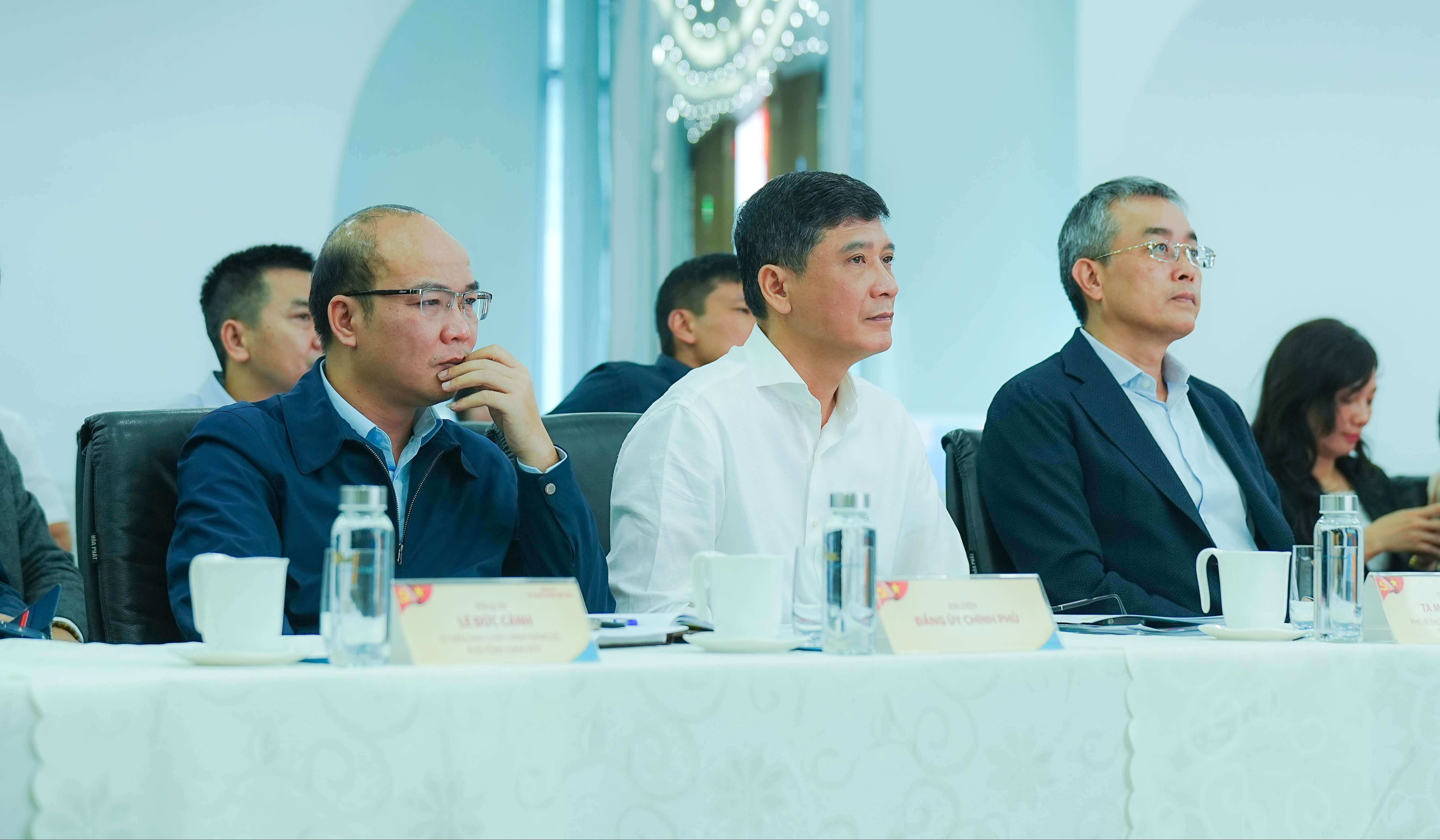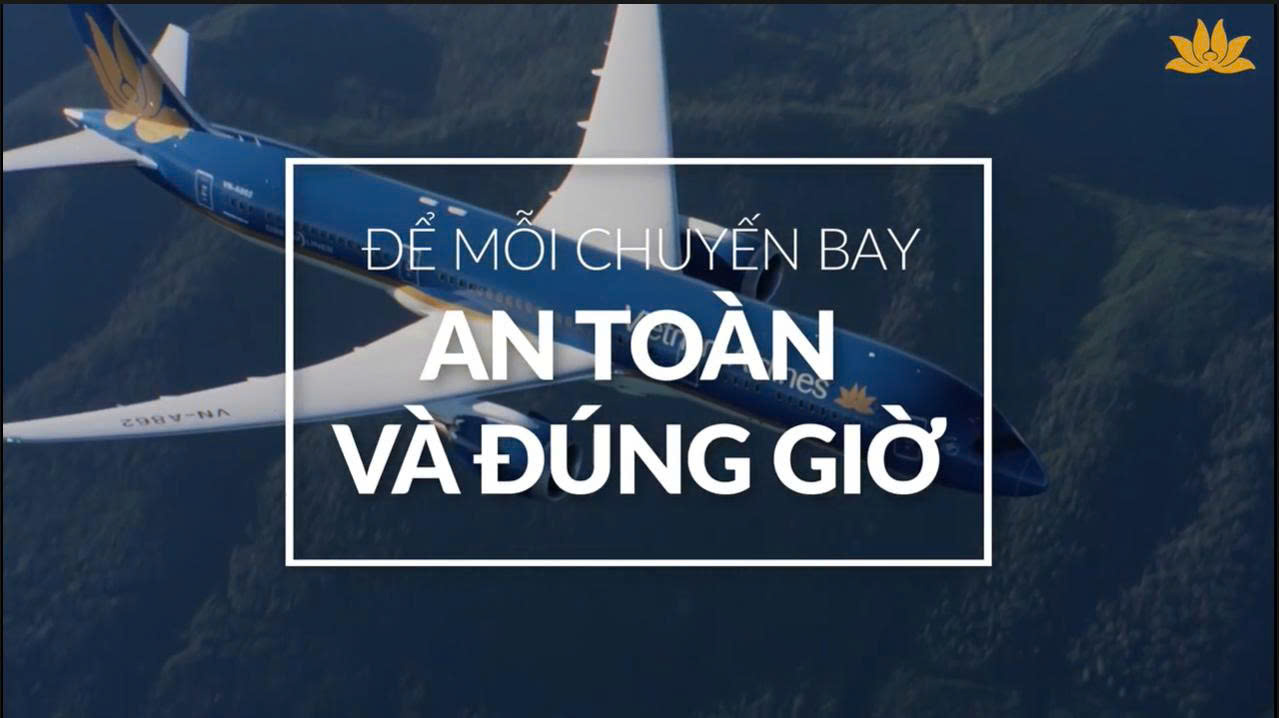Market force
Chief executive Duong Tri Thanh is guiding Vietnam Airlines through challenges and opportunities as the flag carrier’s home country embraces open skies and market economics
In a corner of Hanoi’s Noi Bai International airport is a derelict Ilyushin IL-18 in the livery of Vietnam Airways, a forerunner to the Vietnam Airlines of today. The Cold War icon sits on flat tires, corrosion all but obscuring its blue and white livery. It rests in clear sight of Hanoi’s two parallel runways, a silent witness to the revolution taking place within Vietnam’s airline sector – and the major changes in Vietnam Airlines itself.
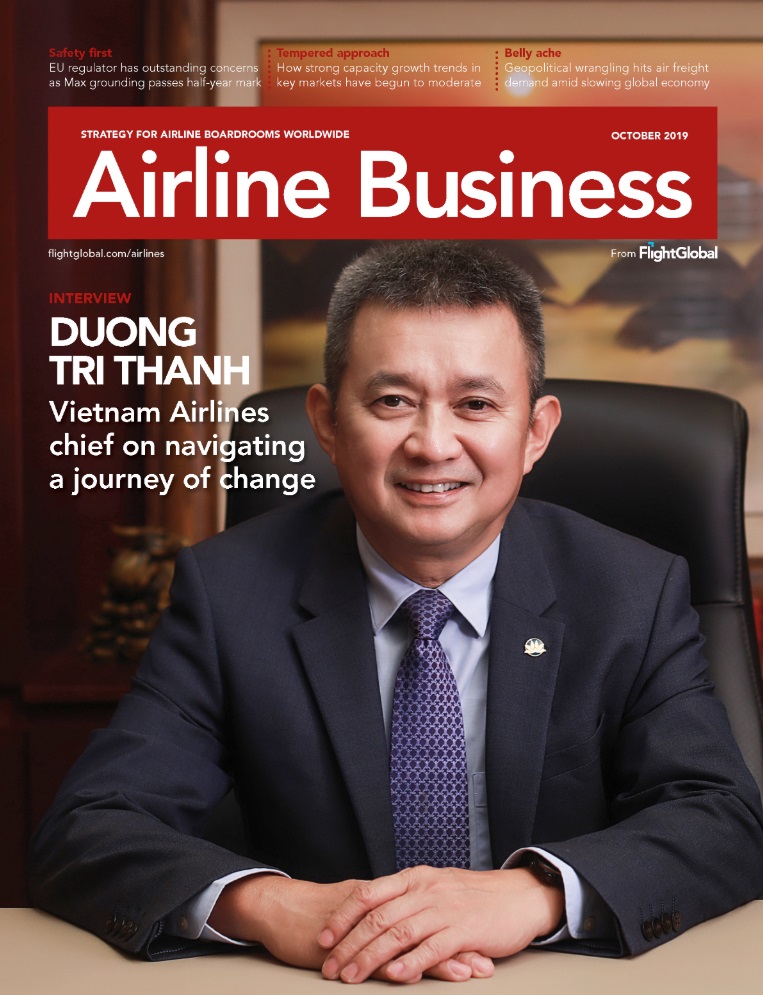
“Interview Vietnam Airlines chief on navigating a journey of change” magazine cover (Cre: Airline Business).
As recently as the early 1990s, Vietnam, then under US sanctions, relied on Soviet-built aircraft. The Tupolev Tu-134 formed the backbone of its fleet. Prior to the Clinton administration’s lifting of sanctions in 1994, a complicated transaction allowed the carrier to operate a single Boeing 737-300 in the early 1990s, but this aircraft bore a snow-white paint scheme with no livery. Today, Vietnam Airlines has one of the world’s most modern widebody fleets, anchored on the Airbus A350-900 and 787-9, and is bolstering its A321 fleet with new A321neos. Vietnam Airlines needs advanced types to deal with tough competition both at home and aboard.
Its chief executive Duong Tri Thanh has been involved in Vietnam’s aviation scene since joining the Civil Aviation Authority of Vietnam as an air traffic controller in 1983, a different era and well before Vietnam opened its economy. He joined the airline in 1990, eventually rising to his current position in 2016.
Duong recently spoke with Airline Business at the company’s Hanoi headquarters in a complex of older, French colonial buildings. These lie not downtown, but in a quiet neighborhood on the opposite bank of the Red River. Crossing the bridge to visit the airline, visitors see the smog and high-rise real estate developments that mark the country’s booming economy. Vietnam Airlines, in keeping with the times, is constructing a gleaming new headquarters.
“
The phenomenon is the repeat of what happened in other markets. The boom in demand coincided with the opening of the market”
Asked about the high points and low points of his three years at the top, Duong says that the biggest change has been with the company’s ownership structure, which involved All Nippon Airways taking an 8.7% stake, and the company’s listing on the Ho Chi Minh Stock Exchange in May.
“The plan is for the government to reduce further its ownership in the airline,” he says. “[The Ho Chi Minh City] listing is how we become open to the public and continue the journey of change. This is not just from the airline… it is the government’s policy to move towards a market economy, wherever they see the good parts of the private sector. This is good for competition, the traveling public, and fosters tourism and all kinds of communications. It also makes Vietnam more connected to the world.”
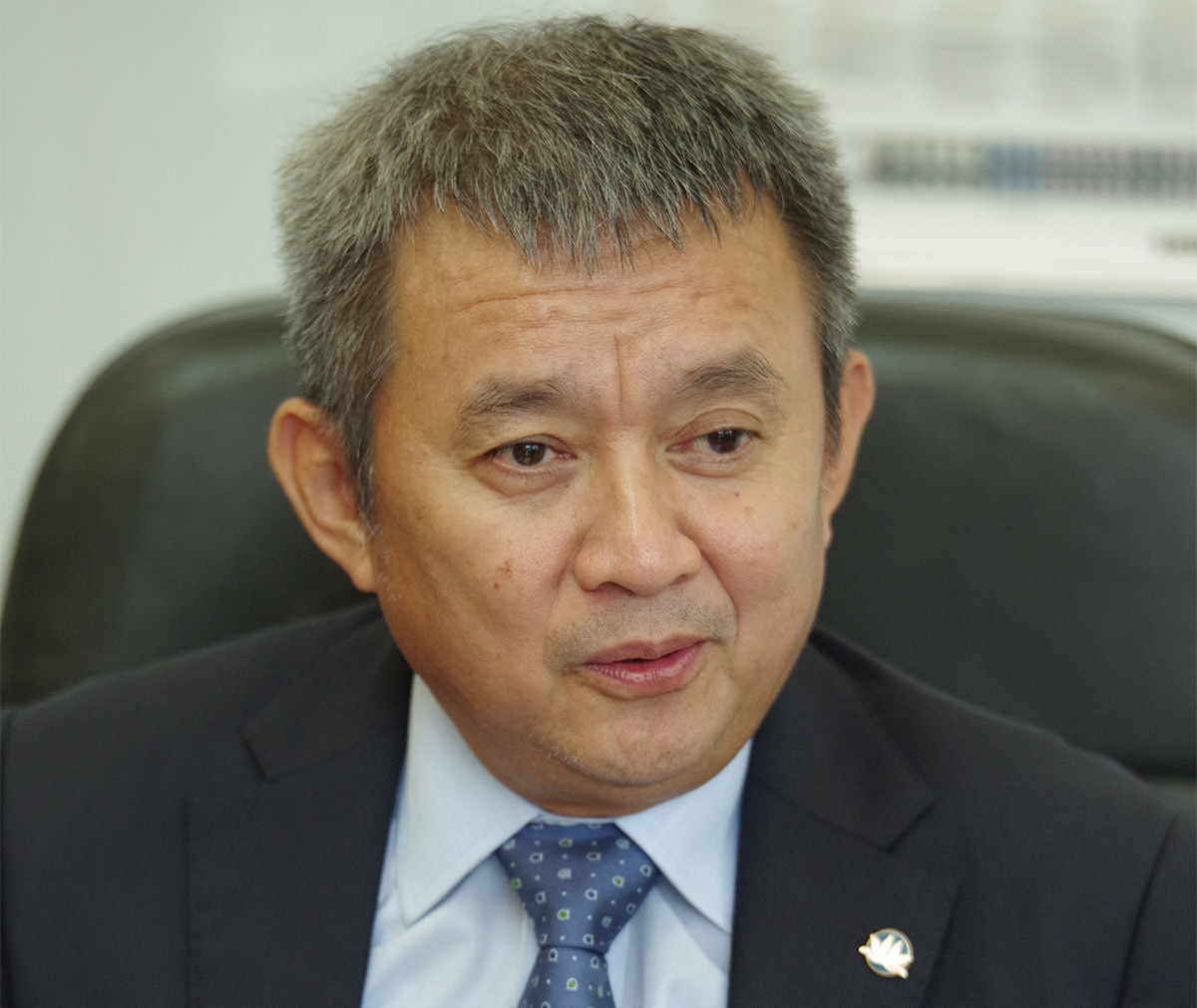 Mr. Duong says that the biggest change has been with the company’s ownership structure (Cre: Vũ Tuấn).
Mr. Duong says that the biggest change has been with the company’s ownership structure (Cre: Vũ Tuấn).
The government still owns 86% of the carrier but has the ambitious goal of reducing this to 51% by 2020. Foreign airlines are allowed to take up to 30% – illustrated by Qantas Airways’ 30% stake in Vietnam Airlines unit Jetstar Pacific – but Japanese law precludes ANA from taking a bigger stake. Duong says that the stock market can help the government reduce its stake through the sale of shares, but selling a large slice of a core state asset is complicated.
“It’s a lot of bidding to make sure it’s transparent, open to competition, but the timeframe is very, very difficult,” he says. “We are working on that.”
As for the low point of his time at the helm, Duong cites a July 2016 cyber-attack against Vietnam’s entire air transport sector. That attack targetted Vietnam Airlines itself, low-cost rival VietJet Air, Ho Chi Minh City’s Tan Son Nhat airport, and Hanoi’s Noi Bai International. The attack, apparently launched in China, was related to territorial disputes between Beijing and Hanoi in the South China Sea, which Vietnam refers to as the East Sea. In addition to flight delays, passenger information was compromised.
“We overcame and we changed,” says Duong. “Today we can quite comfortably say we have a lot of improvements in systems.”
There have also been the conventional challenges that the bosses of Southeast Asia’s other established airline groups are familiar with: the rapid rise of local low-cost rivals – VietJet in the case of Vietnam Airlines – and the growth of big hub carriers in regions such as the Middle East and China. Cirium fleets data shows that in August 2014, VietJet had just 15 in-service narrowbodies with 64 orders, while today it has 70 in-service aircraft and 312 orders. In August 2014, Vietnam Airlines and 70%-owned unit Jetstar Pacific operated 85 aircraft with 38 orders, and today operate 115 aircraft with 18 orders.
The additional capacity entering the market has placed tremendous strain on airport infrastructure, particularly in Ho Chi Minh City. It has also seen the Ho Chi Minh City-Hanoi route become one of the most competitive in the world. Cirium schedules data shows that on a given day there are more than 60 services in each direction on the route. In August 2019, Vietnam Airlines operated a total of 364,000 seats on the route, nearly 50% of its total capacity as measured by seats. This gave it a 46.2% capacity share on the route, followed by VietJet (22.3%), Jetstar Pacific (18.5%), and Bamboo Airways (11.8%).
Bamboo Airways, the market’s most recent upstart, began services this year. Backed by a real estate tycoon, it has nine Airbus A320-family jets in its fleet and firm orders for three more. It also has orders for 10 787-9s, in addition to letters of intent for additional aircraft. Other groups, including AirAsia, have dreams of operating in Vietnam as well.
“The phenomenon that is taking place in Vietnam is the repeat of what happened in other markets,” says Duong. “The boom in demand coincided with the opening of the market by the government. It’s twofold: very open skies coupled with encouragement of the private sector to grow.”
He notes a trend where real estate tycoons, as is the case with Bamboo, have sought to enter Vietnam’s airline business. Another powerful real estate company, VinGroup, has plans to start an airline, Vinpearl Air.
“[Airlines are] quite a risky business. I don’t know if history will repeat itself, but in America, China, Russia and Singapore things eventually stabilized and rationalized.”
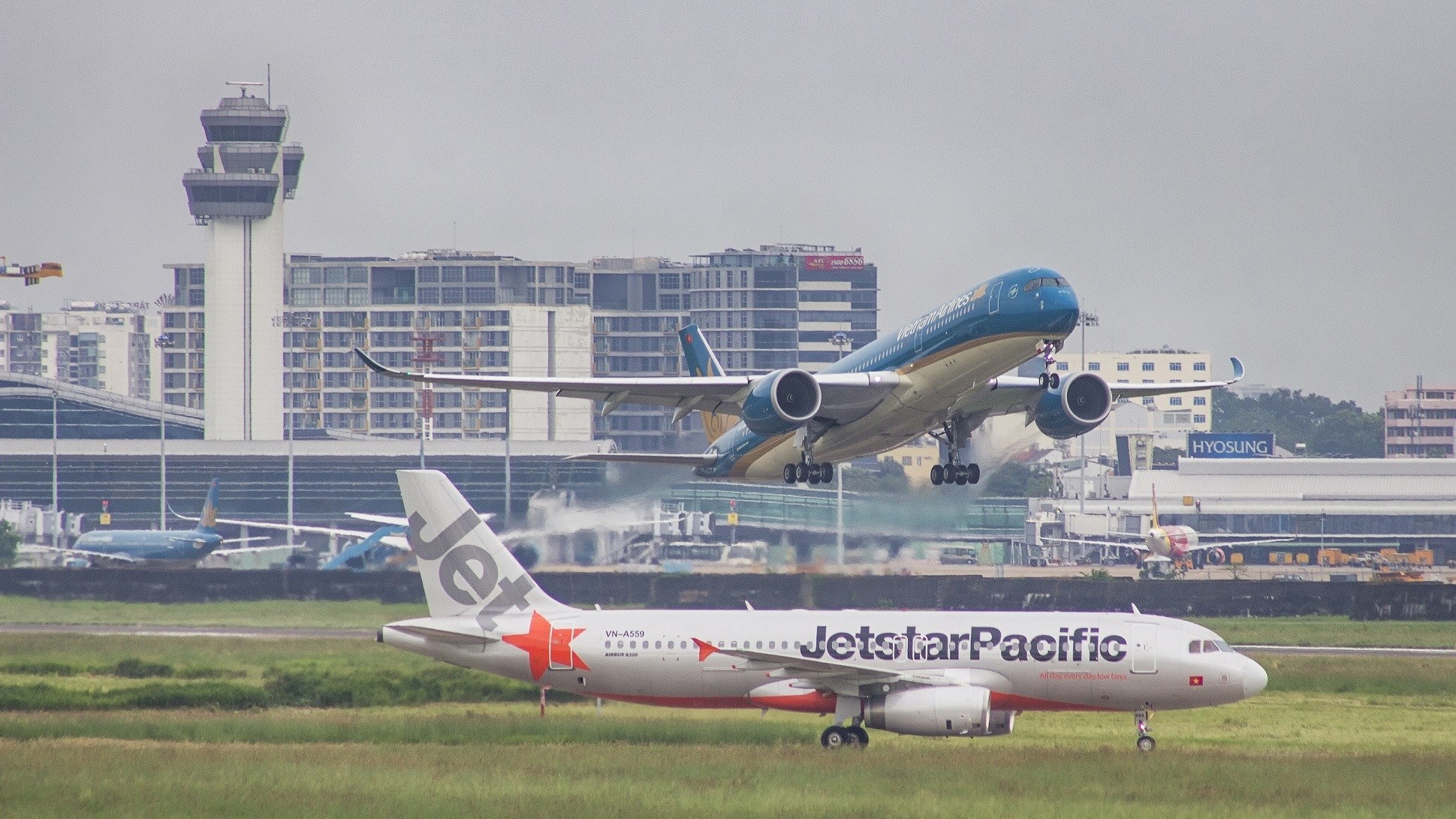 To help deal with the threat of low-cost rivals, a key element in Vietnam Airlines’ strategy is its Jetstar Pacific unit (Cre: Yeu may bay).
To help deal with the threat of low-cost rivals, a key element in Vietnam Airlines’ strategy is its Jetstar Pacific unit (Cre: Yeu may bay).
To help deal with the threat of low-cost rivals, a key element in Vietnam Airlines’ strategy is its Jetstar Pacific unit. Jetstar Pacific has 18 A320 family aircraft and has its headquarters in Ho Chi Minh City. Its chairman is Le Hong Ha, who also serves as executive vice-president of Vietnam Airlines.
“By having a dual-brand policy we work quite closely with Qantas and Jetstar Group, and it’s proved to be a very successful way of growing the group, with Vietnam Airlines focusing on full service, and Jetstar Pacific [the low-cost sector]. We work together to grow ourselves and protect ourselves from the competition.”
OVERSEAS AFFILIATES
Vietnam Airlines also has an overseas affiliate in the form of Cambodia Angkor Air. It owns 49% of the Phnom Penh-based carrier, and the Cambodian government 51%. Duong notes that in July the airline celebrated its 10th anniversary. While the Vietnamese market has seen its share of changes, Cambodia has arguably seen more, with the entry of several China-backed airlines in recent years. Duong indicates that this presents challenges for Cambodia Angkor Air, which operates just six aircraft: two A320s, one A321, and three ATR 72-600s. The carrier mainly operates domestically but also serves Ho Chi Minh City, Da Nang, as well as Guangzhou, Macau, Hangzhou, and Beijing – although not Hanoi.
“With so many new start-up airlines… it makes the position in that market very difficult,” says Duong. “We are considering how to arrange to the point where we may maintain Vietnam Airlines cooperation, but on the ownership side, we may have to consider whether to reduce or withdraw.”
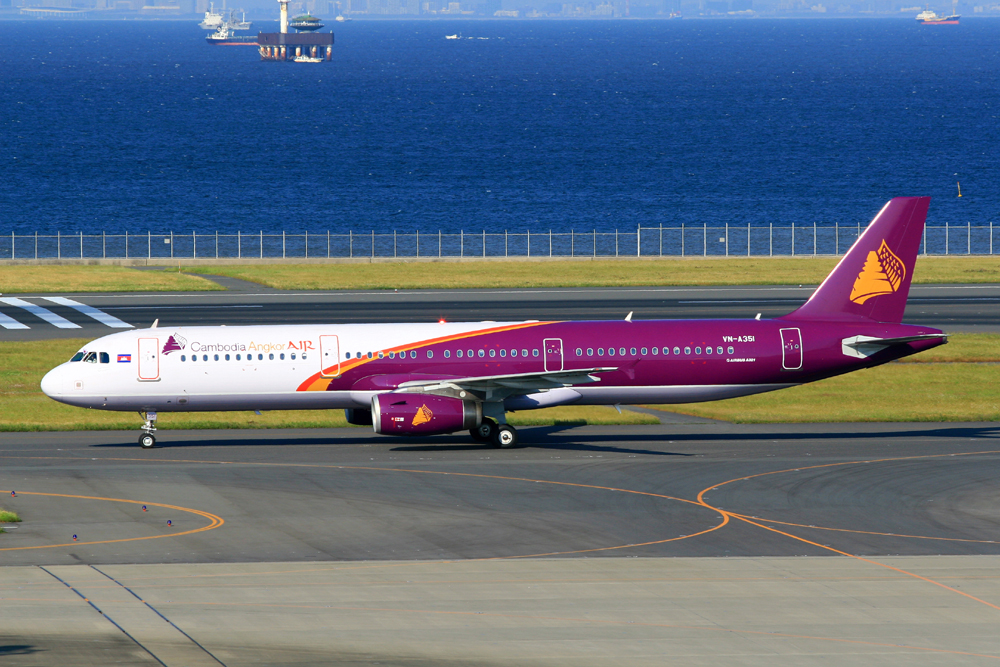
Vietnam Airlines also has an overseas affiliate in the form of Cambodia Angkor Air (Cre: Cambodia Angkor Air).
Another major change Duong has overseen is a significant fleet modernization. “Before we had a mix of 777s, A330s and A321s, but now the 787-9 and A350-900 form the backbone of the fleet, and we have seven A321neos in service out of a total of 20. All these new aeroplanes give us improvements on cost, fuel consumption, maintenance, and more importantly, better comfort for passengers.”
“All these new aeroplanes give us improvements on cost, fuel consumption, maintenance, and more importantly, better comfort for passengers”
To help replace older A321s and give the airline more flexibility with regional destinations, Vietnam Airlines is exploring an order for 50 narrowbodies and up to 15 regional jets.
“By definition, it’s a narrowbody [and] whether it’s a Boeing or an Airbus, it is open for consideration,” he says. “When the fleet is below 50-70, there is a need to have a common type.”
He adds that the newly-launched A321XLR is a “very interesting type of aeroplane and we would seriously consider it”, as it would be effective on long, thin routes that “cannot support larger aircraft”.
The new narrowbody will allow the airline to capitalize on key Northeast Asian markets such as South Korea and Japan.
The airline is looking at a mix of sizes. Vietnam Airlines had the chance to see the A220 first hand when Airbus conducted a recent tour in the region that stopped at Hanoi.
“[The A220] is providing the capacity in the range of 130-140 passengers, so it could be a bridge between most of the aeroplanes within our fleet with 180 seats, to 70 seats with the ATR,” he says. “But actually we have been considering a regional jet, a 100-seater. But the change in ownership at Bombardier will make this decision take longer for us.”
Bombardier is in the process of divesting the CRJ program to Mitsubishi and has stopped offering the CRJ for sale.
The focus on narrowbodies means a long-mooted acquisition of long-range widebodies is somewhat less of a priority. In any case, Duong says the airline has its hands full with the induction of new types. Since 2015, it has added 14 A350-900s and 11 787-9s and has started taking deliveries of eight 787-10s.
“We are now quite comfortable with the mix of current 787s and the A350s. This will be okay for another five or six years. Now we are quite busy working on the program for the acquisition of 50 narrowbodies.”
Duong also questions the scale of the opportunity offered by the Federal Aviation Administration’s awarding Vietnam with Category 1 status in February. This allows Vietnamese airlines to serve the USA directly and for them to carry the code of US carriers. Category 1 has long been viewed as an impetus for Vietnamese carriers to obtain long-range aircraft for direct USA services. The Vietnam-USA route is seen as one of the world’s largest under-served markets given the USA’s large Vietnamese diaspora. Over the years, VietJet has flirted with obtaining widebodies to serve the USA market. Bamboo Airways has also expressed interest.
“There is demand [from the USA] in terms of numbers, but in terms of commercial value and considerations, the revenue side cannot currently cover very costly operations to the USA,” says Duong.
 Vietnam Airlines’ newest aircraft model – Boeing 787-10 (Cre: Boeing).
Vietnam Airlines’ newest aircraft model – Boeing 787-10 (Cre: Boeing).
He points out that even American carriers prefer to serve Vietnam through connections with partner airlines in North Asian hubs. In addition, Korean and Taiwanese carriers are strong at channeling USA-Vietnam traffic through North Asia, and increasingly mainland Chinese carriers such as China Southern are active in the market.
As the first step in better addressing the USA market and taking advantage of Category 1 status, Vietnam Airlines and Delta Air Lines recently agreed to upgrade their codesharing relationship, setting the stage for Delta to place its code on Vietnam Airlines flights.
The upgraded agreement will see Delta distributing Vietnam Airlines seats on the Hanoi-Tokyo route from October 2019. This adds to a previous agreement between the SkyTeam members signed in 2010, which allows Vietnam Airlines to sell onward connections aboard Delta from Tokyo Narita and Frankfurt.
Another area of potential growth is the country’s booming electronics market, which has attracted significant interest from North Asian cargo carriers. Duong, however, is cool on the idea of obtaining main-deck freighters – though the airline has been exploring its options.
“The demand for air cargo/freighter operations is clearly there, with many people coming in,” he says.
“We are taking advantage of developing our widebody fleet with belly capacity, but [for] freighter operations clearly we need some cooperation with the very large and experienced cargo operators, [such as] our close friends like Korean Air and China Airlines.”
While Vietnam has enjoyed strong growth, Duong is well aware of the challenges ahead. He lists a range of issues including the fuel price and LCCs. To help deal with these, he says that it pays to stick with the basics, with an eye to cut costs and diversify revenue streams.
“It is of the utmost importance to keep up our on-time performance and service quality, and also to be transformed internally in terms of new technologies, to offer better services to customers, and to improve internal management in all respects,” he says.
Dreaming bigger
Vietnam Airlines took delivery of its first of eight Boeing 787-10s in mid-August, acquired through a lease deal with Air Lease.
The GE Aviation GEnx-powered 787-10 joined Vietnam Airlines’ existing fleet of 11 smaller 787-9s, providing capacity for up to 40 more passengers, says Boeing. The airline is configuring its 787-10s with a 367-seat two-class layout comprising 24 in business and 343 in the economy.
“We are confident that the Boeing 787-10 fleet will further elevate the customer experience on the Hanoi to Ho Chi Minh route as well as many international routes,” says Pham Ngoc Minh, chairman of the board of directors of Vietnam Airlines. Air Lease executive chairman Steve Udvar-Hazy adds: “Air Lease is extremely pleased to announce this important first 787-10 delivery to Vietnam Airlines with Boeing and be the first lessor to introduce the airline to the -10.”
Boating prowess
In addition to his day job as chief executive of Vietnam Airlines, Duong Tri Thanh is the chairman of the Vietnam Association of Boat Racing, which he describes as “more of a social organization”.
Duong has been instrumental in organizing a dragon boat festival in Hanoi in the past two years. A Vietnam Airlines dragon boating team recently went to Shanghai to participate in a competition. The team comprises Vietnam Airlines colleagues including pilots, aircraft engineers, and cargo handlers.
Duong is an avid boater in his personal time. While the de facto sport of senior executives in the region is often golf, he prefers sculling. A brass replica of a one-man scow sits amid the aircraft models in his office.
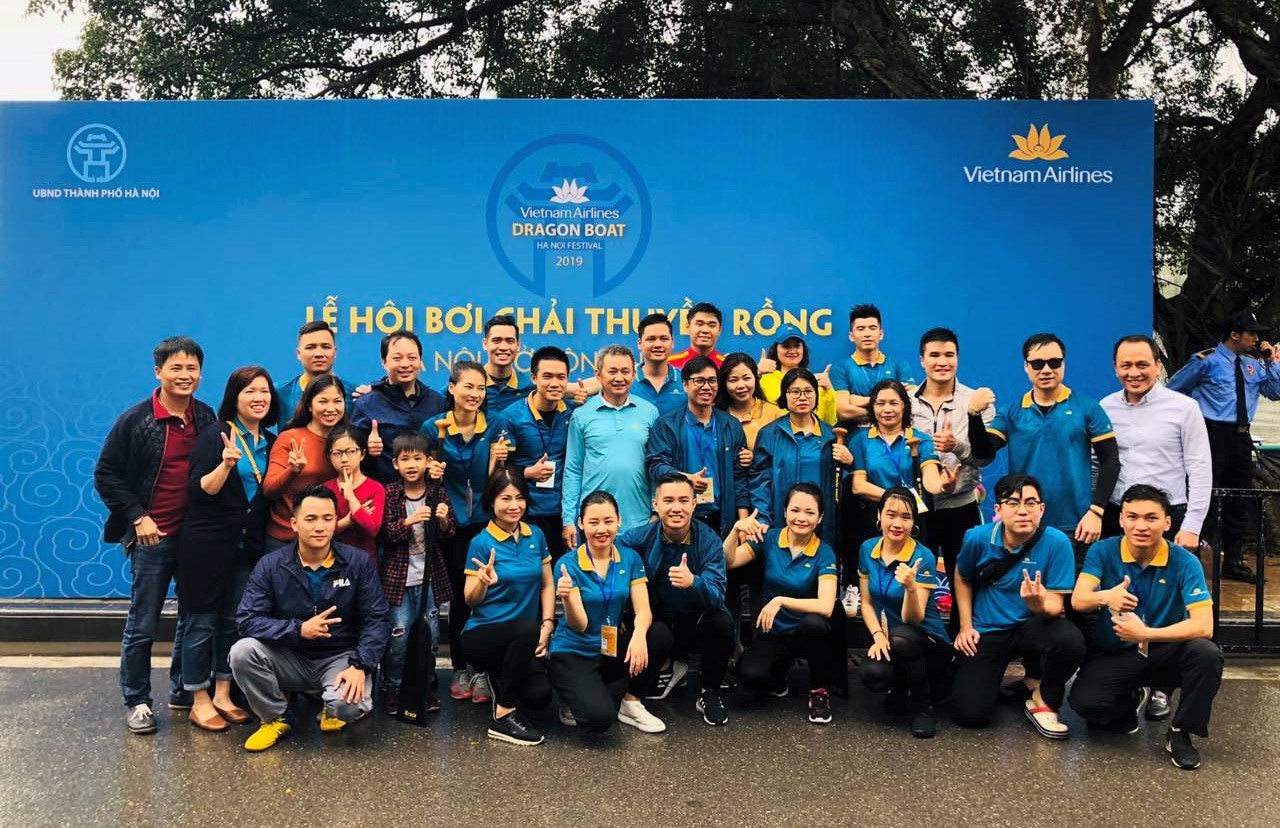 In addition to his day job as chief executive of Vietnam Airlines, Duong Tri Thanh is the chairman of the Vietnam Association of Boat Racing, which he describes as “more of a social organization” (Cre: VNA).
In addition to his day job as chief executive of Vietnam Airlines, Duong Tri Thanh is the chairman of the Vietnam Association of Boat Racing, which he describes as “more of a social organization” (Cre: VNA).
When the weather allows, Duong goes sculling first thing every morning in Hanoi’s famous West Lake, which is situated close to his home.
“I live near the lake and I like swimming and the outdoors,” he explains. “Instead of golfing, which is too time-consuming and quite costly, this is a nice and good sport to follow.”
Typically, he hits the water between 5:00-5:30 am, rowing for one hour as the sun rises over Vietnam. He notes that golfing requires one to wake up earlier.
He leaves his cellphone behind and states that sculling is a great way to keep fit.
As for what he thinks about during his work out, Duong has this to say: “Everything… and business clearly.”
Safety systems
After a long career in the industry, Duong Tri Thanh has a deep familiarity with the business. Airline Business, therefore, asked him: what is the biggest mistake an airline boss can make?
“For the airline CEO the top job is safety,” he replies immediately. “If you cannot get ahold of that, then the whole thing will be in serious jeopardy.”
He stresses that a strong safety system that is logical, strict, and which encourages openness and fairness, is essential for growth.
“You need a system that is well organized, responsible and responsive – and it’s not just safety, but the culture.”
He notes that measuring results from other aspects of the business, such as marketing campaigns, can be challenging – but this is not the case with safety.
“When you focus on safety, and you place attention and time on it, you see an immediate result.”
Cre: Airlines Business (link)
Nguyen Mai Huong-COMM




